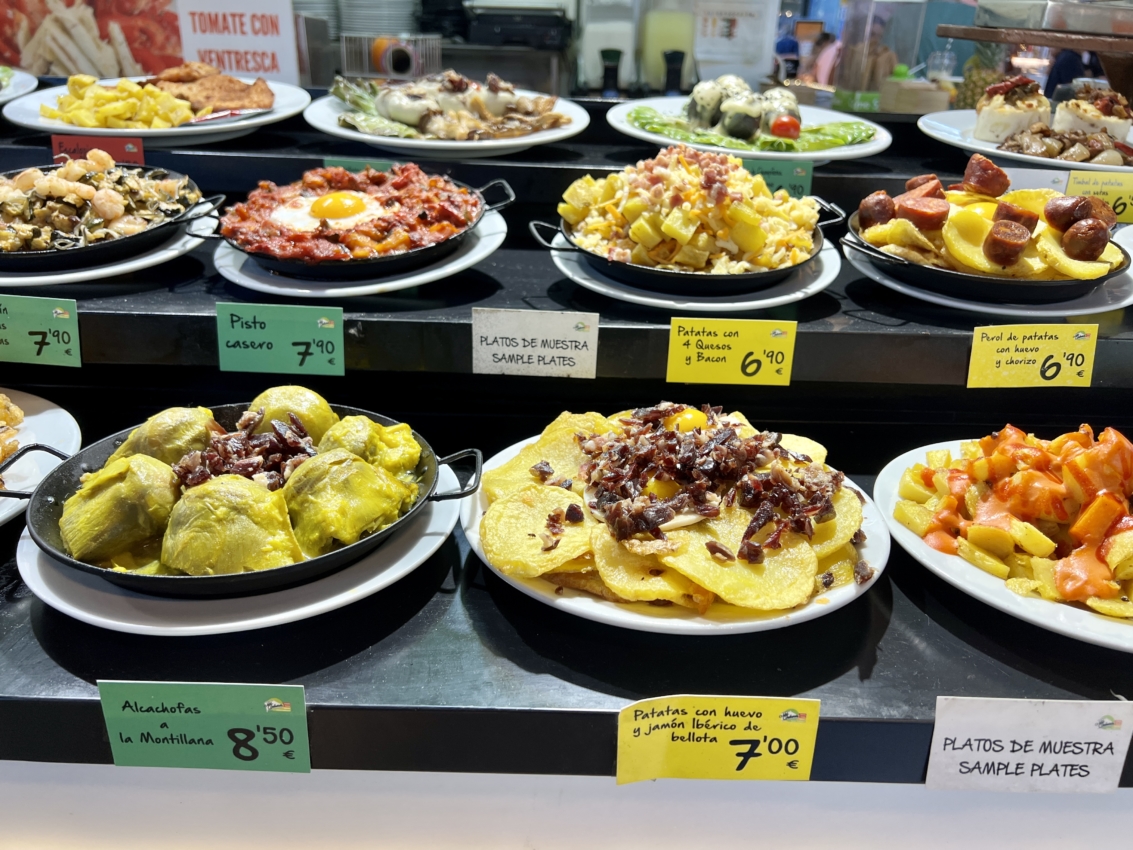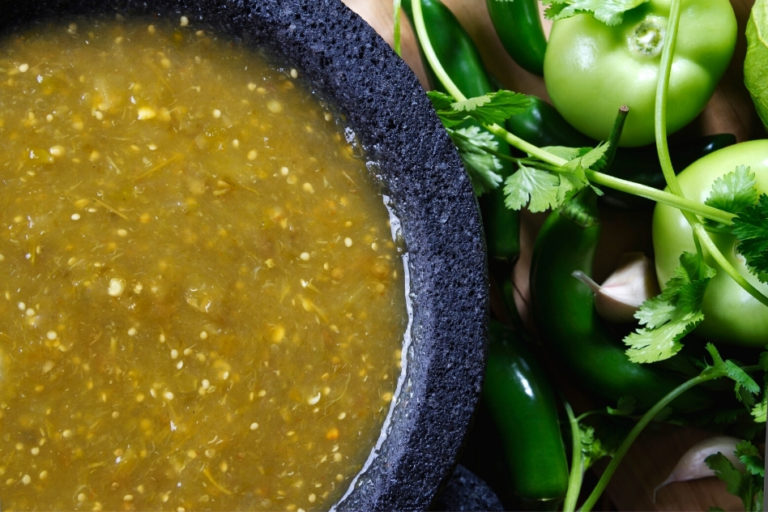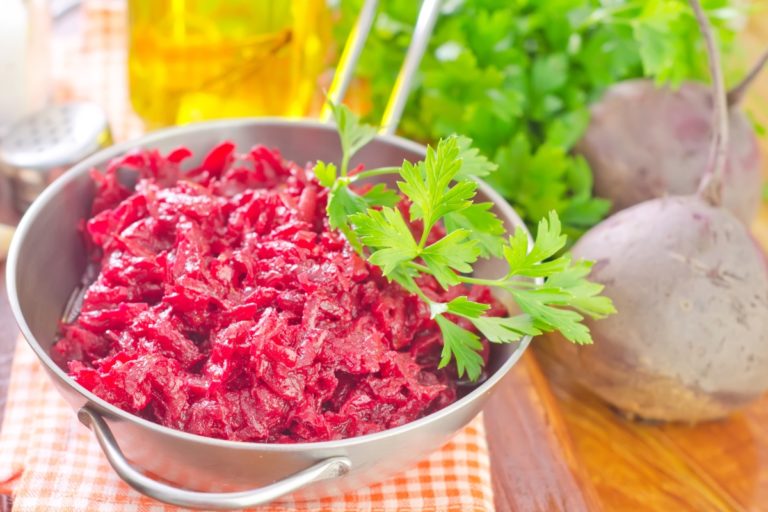What’s Tapas?
Quite similar to the French hors d’oeuvres, tapas are a favorite snack all over the world! Derived from the Spanish word ‘tapar’ which means to cover, tapas are the perfect combination for drinks or as an appetizer for lunch or dinner parties.
Much like a charcuterie board, hot or cold tapas can also be consumed as full meals by mixing together different types of tapas.
Tapas are also called botanas in Mexico and botas in other Latin American countries.
Where did Tapas Originate?
Tapas originated in Spain and were traditionally served with sherry in the Andalusian taverns of yore. According to Irma Rombauer, author of the 1938 book The Joy of Cooking, tapas were thin slices of meat such as chorizo or ham, or thin bread slices that were offered to patrons to cover the glasses in between sips. The tapas prevented the fruit flies from gaining access to the sweet sherry.
The meat slices being salty made the patrons thirsty, and in turn, they would order more drinks. The restaurant owners took note of this and started serving small salty snacks to serve with the sherry. Locals soon started patronizing the tapas bars or cantinas that served tapas over the regular cantinas. And as Spain explored the world and conquered new territories, tapas spread everywhere from there!
But as with most famous dishes, there are a number of stories on how tapas came to be.
One version states that long before the 19th century, Spanish travelers had the option of staying at vodegas, posadas or albergues that also served meals, like the modern-day bed and breakfasts. But reading and writing weren’t common at the time. So innkeepers would offer the guest a sample of their dishes on a pot cover called a tapa. And that’s where the word tapas came from!
Another version talks of how King Alfonso X of Castile fell ill. To recover from his illness he drank wine with small snacks between meals. Once the king recovered, he issued a decree that all taverns in the land could not serve wine unless it was accompanied by a snack aka tapas.
There are more legends about the creation of the tapas attributed to different Spanish kings, but these were the most important.
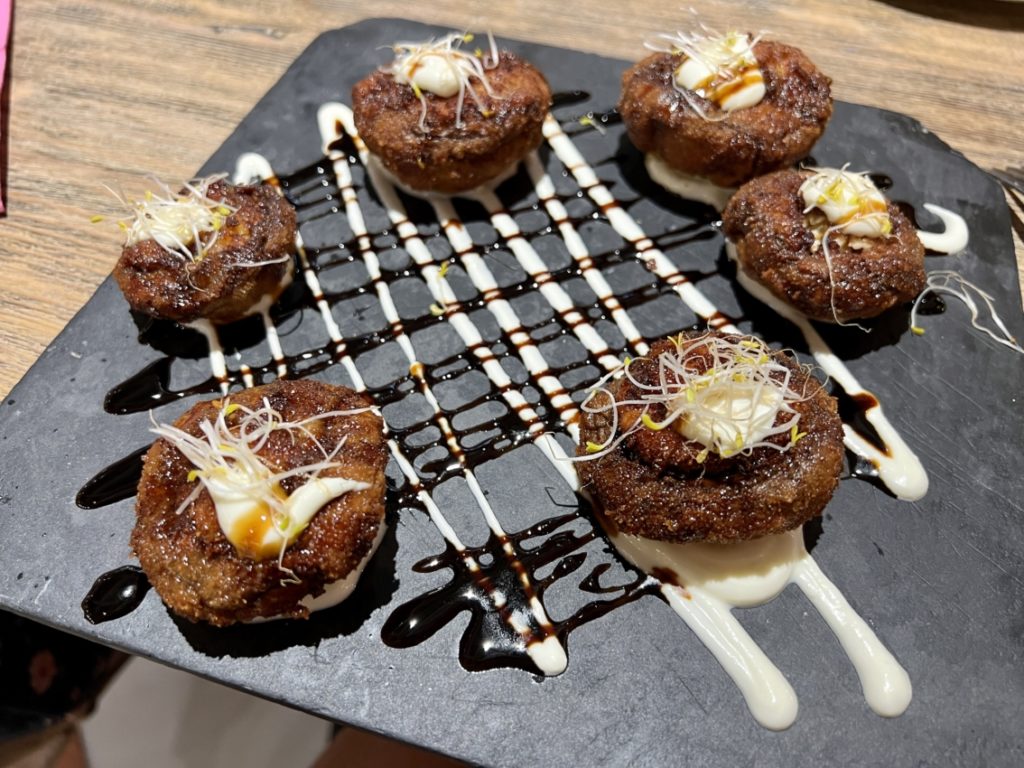
Different Types of Tapas:
There are dozens of varieties of tapas that you must try. They can be either cold tapas, hot tapas, or warm tapas. Here are some of the most popular options!
1. Pincho de Tortilla
Some might call the pincho the tortilla a Spanish omelette (tortilla espanola) or a potato (tortilla de patatas). Traditionally made with potatoes, olive oil and eggs, some also contain chopped onions. These tortillas are cut into small wedges and served. Hence the name pincho meaning wedge! Pincho the tortilla is perfect hot or cold with aioli.
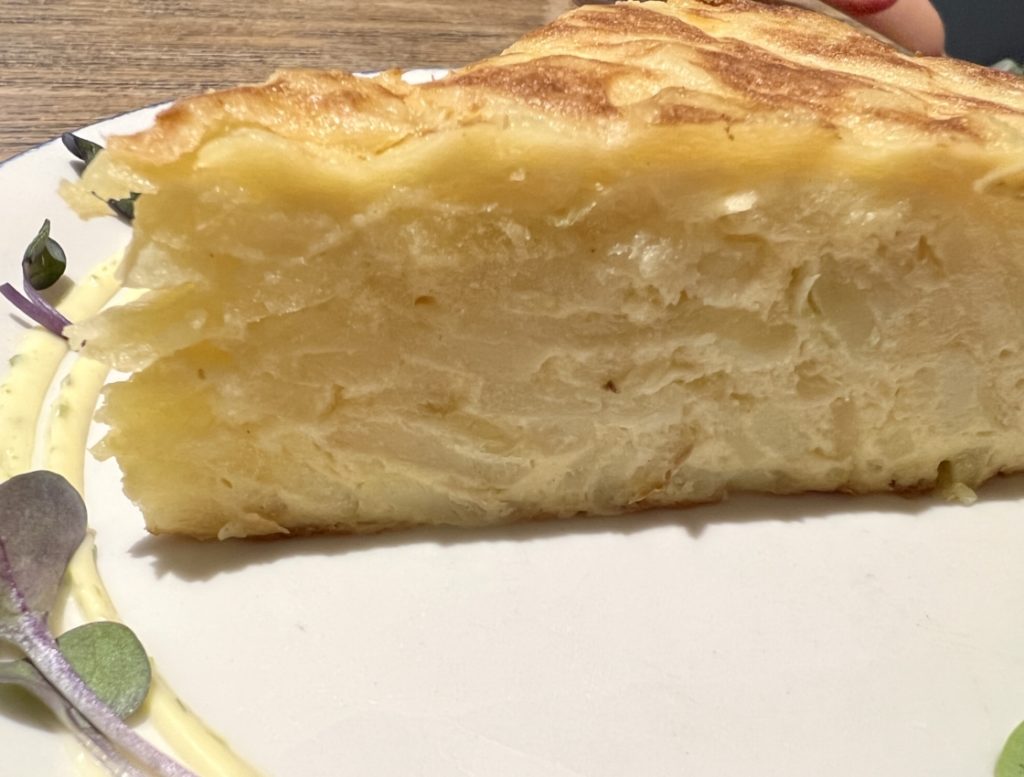
2. Aceitunas
Quite simply, pickled olives have been either stuffed with chopped bell peppers or anchovies.
3. Albóndigas
Ground beef or pork meatballs are usually served with tomato sauce. It may also come as a small soup containing potatoes, celery, carrots, and gerbs.
4. Patatas Bravas or Papas Bravas
Diced potatoes are boiled and fried before being served with spicy tomato salsa or aioli. They’re also called papas bravas or patatas alioli.
5. Queso con Anchos
A platter of a few spicy local cheeses topped with anchovies.
6. Calamares
Squid that has been cut into rings, then battered and fried with oil. Often served with a sauce and a slice of lemon.
7. Croquetas
A ball-shaped or oval dish made of a filling that is breaded and deep-fried. The filling may be of cheese, meat, fish, or mashed potatoes; and in Mexico, they’re also made of chicken, black beans, or plantains. Often served with a dipping sauce.
8. Mejillones rellenos or Tigres
Mejillones rellenos, sometimes called tigres (tigers) are stuffed mussels that you can buy as street food too. The mussel shells are stuffed with a sauce made from the mussels, then breaded and deep-fried.
9. Huevos Estrellados or Huevos Rotos
Deep-fried eggs with a liquid yolk are often served with french fries, chips, or ham. Depending on the ingredients used, the dish is called huevos rotos or huevos estrellados.
10. Pulpo a la Gallega
Sometimes called polbo a fiera, the pulpo a la gallega is octopus that has been boiled and chopped into bits. It’s served with paprika, salt and olive oil.
11. Ensaladilla
Almost like a Russian salad, ensaladilla is a dish made from olives, mixed boiled vegetables, and tuna slathered in mayo and served cold.
12. Gambas
For seafood lovers, gambas is a must-have among tapas. The prawns or gambas can be sauteed in a pepper sauce called salsa negra or served with garlic and called gambas al ajillo.

13. Chorizo
Chorizo sausages are absolutely delicious tapas. Chorizo al vino are slow cooked in red wine and served, while chorizo a la sidra is slow-cooked in cider.
14. Boquerones
A favorite at tapas bars, boquerones en vinagre is anchovies marinated in vinegar and olive oil. You might also find some deep-fried versions of anchovies.
15. Banderillas
The closest to a vegetarian option among the traditional cold tapas, banderillas are small skewers of pickled olives, baby onions, cubed carrots, cucumbers, chiles, and other vegetables.
Of course, nowadays there are many more vegetarian and vegan options for tapas available. What is your favorite tapas? Comment and let me know!

Other FAQS About Tapas
Do tapas have to be eaten hot or cold?
Tapas can be eaten either hot or cold depending on the tapas dish. Cold tapas can be olives, anchovies, nuts, slices of meat, patatas alioli, pimientos rellenos, ensaladilla, or others like gazpacho soup. Hot tapas include croquetas, albondigas, chopitos, gambas al ajillo and more.
If I’m cooking tapas at home, can I prepare the tapas in advance?
Some tapas can be prepared in advance because they need to be served cold. Others that include seafood might need to be prepared fresh. It all depends on the recipe for that particular tapas.
How many tapas should you order?
That really depends on you and where you’re enjoying the tapas. Sizes vary from restaurant to restaurant, and the number of tapas served will vary too. But usually, 2 or 3 tapas per person are enough for a starter. If you’re skipping dinner and just doing drinks and tapas, you’ll need to order quite a bit more.
Do you have to eat tapas with your hands?
There’s no set rule about how to eat tapas. You can eat them with your hand, or use toothpicks, forks, or spoons.
Why are the tapas in the cantinas botaneras in Mexico free?
The cantinas botaneras in Mexico follow a more than 100-year-old tradition wherein they offer free food to the patrons as long as they keep ordering drinks. This is so that the customers stay at that particular cantina and do not go off to visit other cantinas.
You’ll also find the regular modern tapas bars that don’t follow this rule and you’ll have to pay for your tapas there.
How can the cantinas botaneras manage to offer free tapas?
The canitnas botaneras incorporate the price of the food into the price of the drinks. So the drinks here might cost a little more than the drinks in regular tapas bars. It’s similar to the concept of apperitivo in Italy!
Which are the best cantinas botaneras in Mexico?
The most popular traditional cantinas in Mexico include El Tio Pepe (the oldest cantina in Mexico City), Salon Familiar La Mascota Cantina, Cantina La Opera, Cantina El Centenario, Salon Espana, Salon Luz, and La Faena.
Can women enter cantinas?
Although in times past, cantinas prohibited the entry of minors, women, dogs, or police. But these restrictions have faded over time and anyone can enter a cantina.
Can I get veg or vegan tapas?
Traditionally tapas always contained some sort of meat or seafood. But in modern times, yes, you will find many veg and vegan tapas bars all across the globe.

